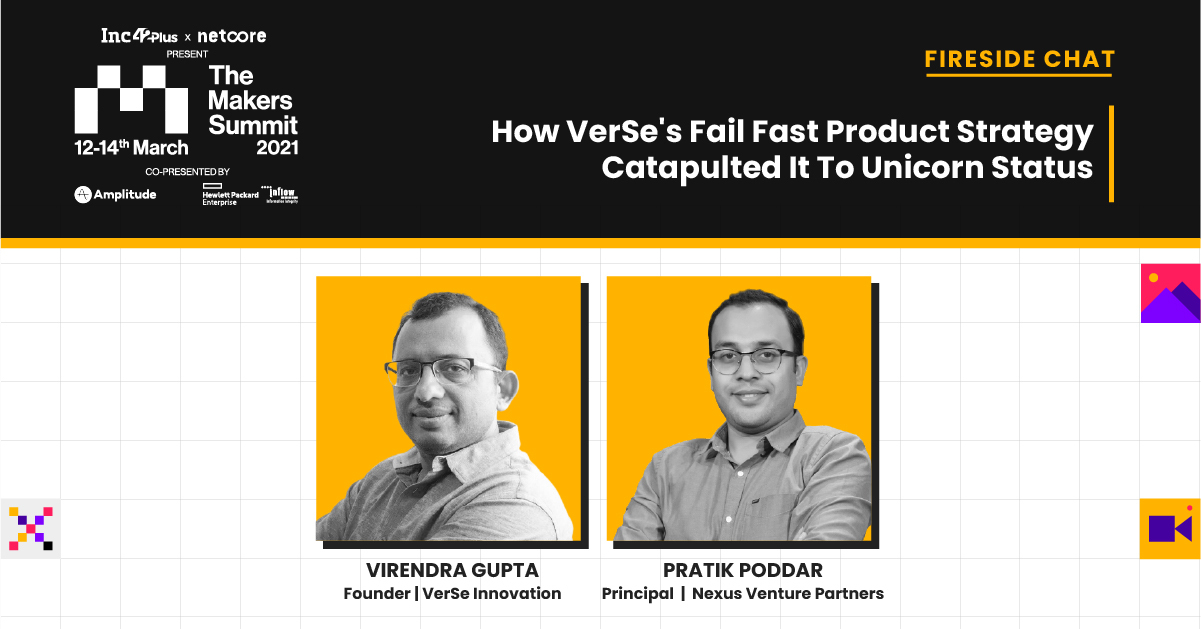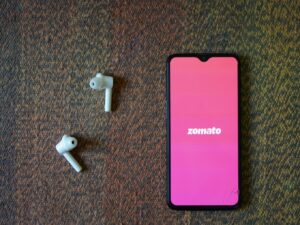It was not just a void in the market that pushed Dailyhunt’s growth. Its product and tech capabilities triggered that growth momentum
Acquisition hacks can keep a user on an app for a month and a half but not more than that; so, the two-month retention data must be considered by all entrepreneurs
People come to a product for a certain experience, and a business must give the users that experience and solve all issues by making the algorithm work around it. Don’t let the algorithm run wild
Entering the vernacular news market, launching a TikTok-like app and joining the coveted unicorn club, Bengaluru-based VerSe Innovation (the brand name is Dailyhunt) has done all these and more since it has started batting in the Bharat market in 2007. Understanding the local audience and evolving at every step, the founder, Virendra Gupta, believes that Bharat is not what we imagine it to be. In fact, boxing Bharat in specific categories is dangerous. Even after serving a pan-India audience for 14 years, Gupta does not think of it as finite.
Gupta discussed his company’s fail-fast product strategy in understanding Bharat and then succeeding in that market with Pratik Poddar, principal at the VC firm Nexus Venture Partners, at The Makers Summit 2021, a virtual product conference hosted by Inc42. Is the Bharat audience ready for paid content? What are the growth hacks used by the vernacular news aggregator Dailyhunt? And finally, how to keep one’s team passionate about the work? Let us dive deep into the founder’s insights and the seismic changes he has brought about to master a market that still eludes many business behemoths.
When Should A Business Start Building More Products
How do parents decide that their children are eligible to manage allowances? There must be some calculation or strategy that will go into it. Similarly, every parent company with a family of apps needs to understand that there is an appropriate time and way of dividing its resources among different products. For market giants like Google, Facebook, and others, it is easier to shell out the capital to try out new product areas because their core products generate enough revenue and empower their decisions. So, the core product needs to scale heavily and produce large enough revenue to fuel the building of other products.
Talking about Dailyhunt’s journey, Gupta recollected how the company started imagining content in 14 local languages in 2011-12 even though the operating systems did not support those language fonts at the time. To create content for Bharat that did not indulge in English alone but required materials in Telugu, Hindi, Malayalam, and various other Indian languages, Dailyhunt partnered with pan-India content creators who had an offline presence. Investing in content creation that would help build the business further was crucial. So, the company introduced non-news content in local languages and also acquired Buyt.In (2015), a content commerce company, and OneIndia (2016), a local news portal, to widen its horizon and user base. According to Gupta, if the core product is strong enough and has fortified itself against the competition, investing in other product lines is much easier and a suitable option.
How To Ascertain The Right Time To Apply Each Metric
Just because there is an opportunity, you should not pounce on it without a parachute. For Dailyhunt, launching a short-video app in 2015 did not prove to be the right decision as the company did not have the right tech stack at the time. But fast forward to 2020, when Dailyhunt launched a similar app called Josh, soon after India banned popular Chinese apps like TikTok following a geopolitical conflict between the two countries. This time, things were different. Squeezing itself into the market void at the right time and with the right tools boosted Josh’s growth. Investing in artificial intelligence (AI), machine learning (ML), personalisation, microservice architecture and tweaking its tech stack further cemented the decision to launch Josh in just two weeks in July 2020. It also gave the team the confidence to grow and bring out new products. It was not just a void in the market that pushed Dailyhunt’s growth. Its product and tech capabilities also triggered the growth momentum.
Unlocking Dailyhunt’s Growth Strategies
At a time when Dailyhunt was not monetising much, Gupta and his cofounder Umang Bedi started focussing on AI and ML and scaled the content supply.
Increasing the raw material (read content) was the most crucial step towards growth, said Gupta. However, building everything in-house is difficult, and a business must look for small tuck-ins to fill the gaps. The company also put a spotlight on adtech and acquired Buyt.In, a content commerce platform, to widen its reach. It focussed on five-six pre-decided growth hacks and strengthened them. Finally, it built a strong go-to-market sales team, bringing in people from YouTube, Adobe and many other companies that understood the ecosystem. In brief, Dailyhunt turbocharged its outcome by working on these five strategies and outperformed all its benchmarks by six to seven times.
Going back to the early days of Dailyhunt, Gupta recalled how Dailyhunt was an app for newspapers and brought news online. But it required Bharat or the ‘Middle India’ to read it. At the same time, handset manufacturers were trying to sell their products to the same target audience. So, the Dailyhunt team got in touch with the manufacturers and shared the idea of marketing the handsets by talking about news in their pockets.
“Creating a win-win situation for all in the value chain helps create free marketing.”
But now there are existing playbooks for all businesses, said Gupta. From Google to Facebook, there are a variety of tools to give businesses their first push.
During the conversation, Poddar said that for him, engagement is more important than the number of daily or monthly active users (DAU/MAU). Just entering an app through a notification and then shutting it down should not be as crucial as staying on and engaging with the app’s content.
Gupta concurred, saying that any company spending on marketing must look at the retention rate of those who have stayed even after two months. Acquisition hacks can keep users on the app for a month and a half but not more than that. Therefore, the two-month retention data must be considered by all entrepreneurs. Moreover, a business should not change its route and take a bus to another destination to increase the ‘time spent’ rate, one of marketing’s favourite metrics. A company should not try and increase it via short-term hacks or add a type of content that does not define its business. Elevate the numbers very delicately while staying true to the business roots, said Gupta.
“People come to a product for a certain experience, and a business must give the users that experience and solve all issues by making the algorithm work around it. Don’t let the algorithm run wild.”
Building And Maintaining A Passionate Team
The most complicated puzzle for a company is finding talented people and building a harmonious team, said Gupta. For horizontal tech stacks that are required across all products and platforms such as adtech or content reconciliation, people with experience in those fields — those who know the tools and the problems that may arise — must be chosen as they are better equipped to capture most of the differentiated customer and supply chain experiences. And yes, having good engineers on a team is a prerequisite.
Talking about product managers, Gupta said that he always liked to work with scrappy, hacky, curious PMs passionate about translating business puzzle pieces into a product. Of course, one person cannot fit all the moulds. So, it is imperative to build a good team that understands different facets of the business. According to Poddar, the qualities of a PM mentioned by Gupta are what he looks for while backing companies; he is also keen on scrappy, hacky and curious entrepreneurs.
It is crucial to keep a team member passionate about work even after hiring. Being honest about the company’s strengths and weaknesses and feeding him/her with all necessary information will help keep a team member passionate. This will also allow the employer to know more about the person and increase job stickiness. Just be your authentic self and showcase the company in its truest way, added Gupta.
Can We Monetise Bharat Users?
Interestingly, ecommerce volumes in Tier 2 and Tier 3 cities are outpacing Tier 1 cities. Hence, the former locations are very much monetisable, and that is where the scope of growth is, said Gupta. Besides, about 80% of the ad money spent by traditional media is on local languages. Monetising content users through ads requires a large volume of an audience that nobody else has, thus preventing distribution of this audience on other apps. This audience must heavily engage with your business, more than what they do with other businesses, so that your business can monetise them.
Talking about Dailyhunt’s early days, Gupta shared how the company started with ebooks and went on to deliver many services to the Bharat audience. But it soon realised that being unique and excellent at one thing would be better than being a super-app, especially when resources did not allow it. This is the best way to monetise Bharat, although it is a gradual process.
Poddar said that in markets like China and the US, many users were not paying for the services provided by content companies. But the number of subscriptions jumped as soon as the ease of payment heightened and payment penetration deepened. Thus, it is not a sudden interest in the content or its quality but smoothly operating payment gateways that make monetisation easy.
He also talked about Hotstar’s model that shifted from ads to ads plus subscription because it knew that the Indian audience would not start paying for the content all of a sudden. To know more about Bharat and how Disney+Hotstar is redefining the marketing funnel, read it here.












